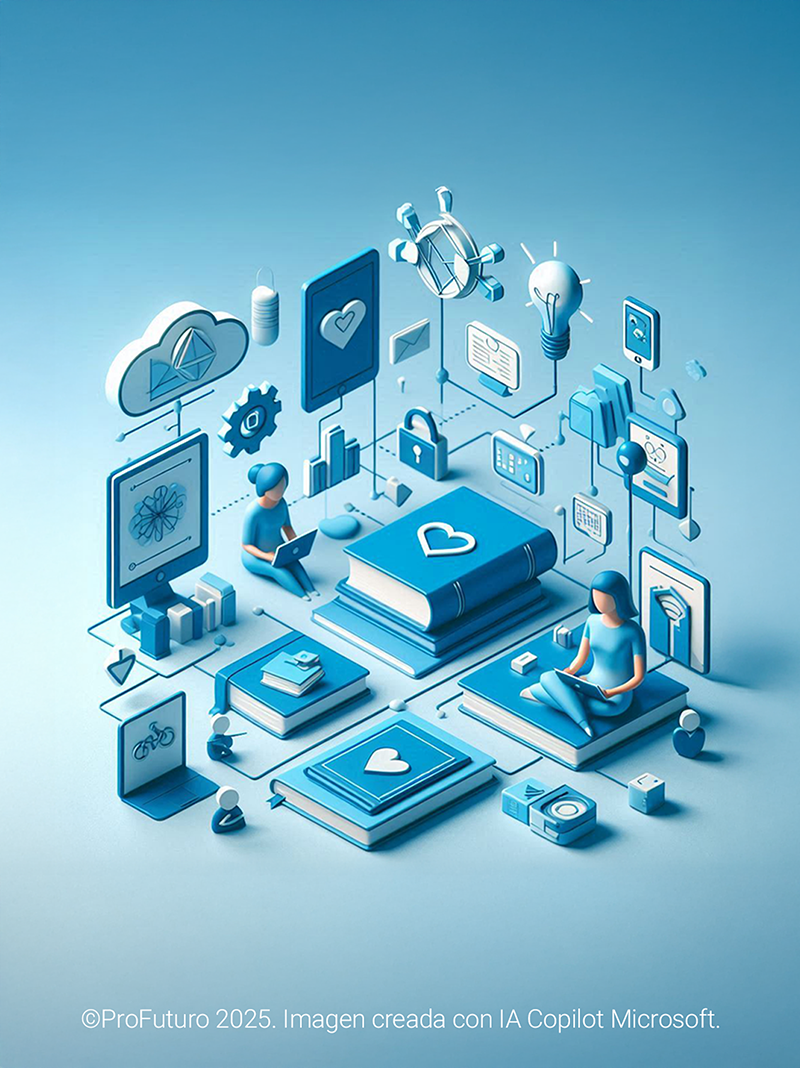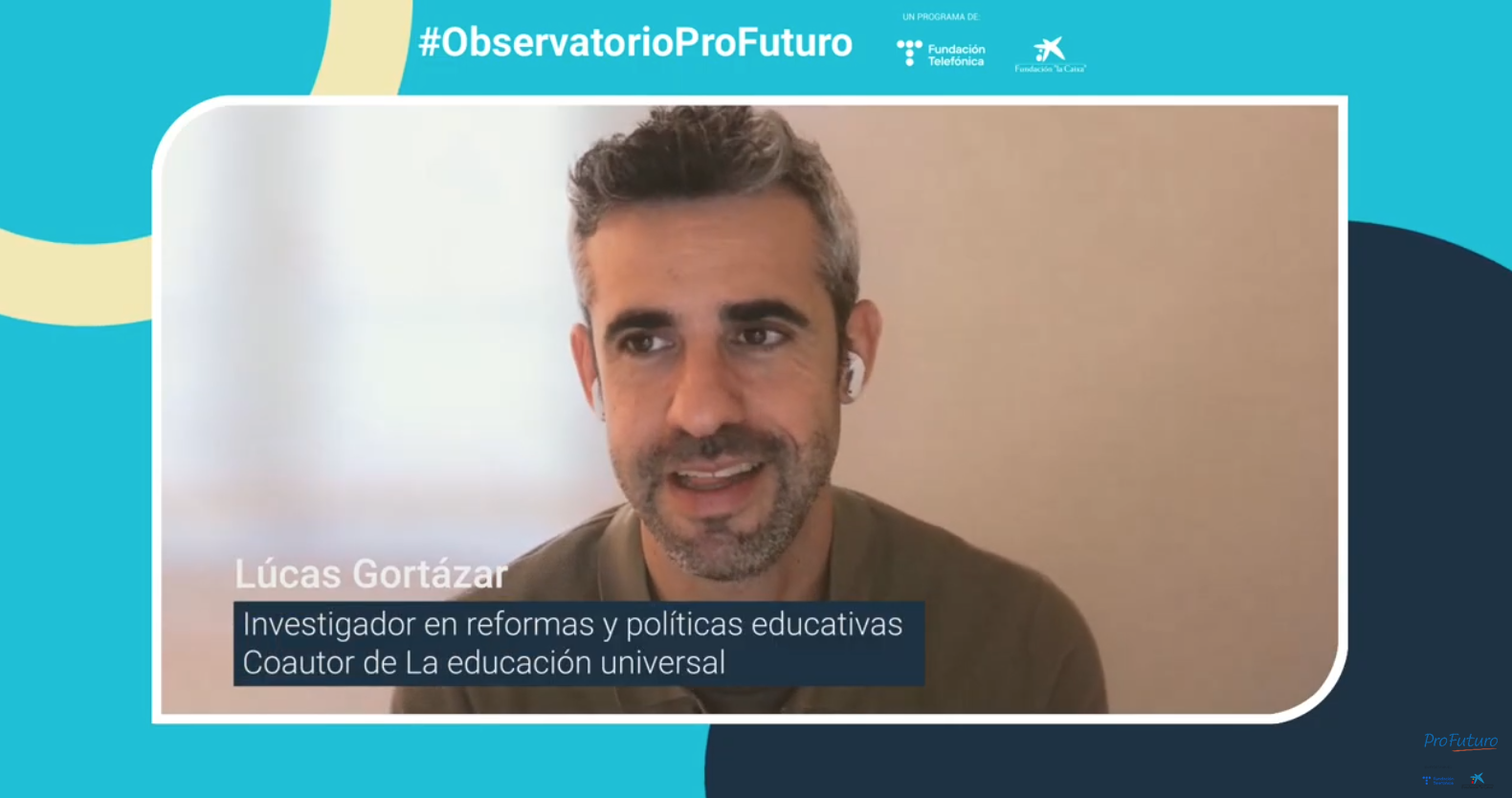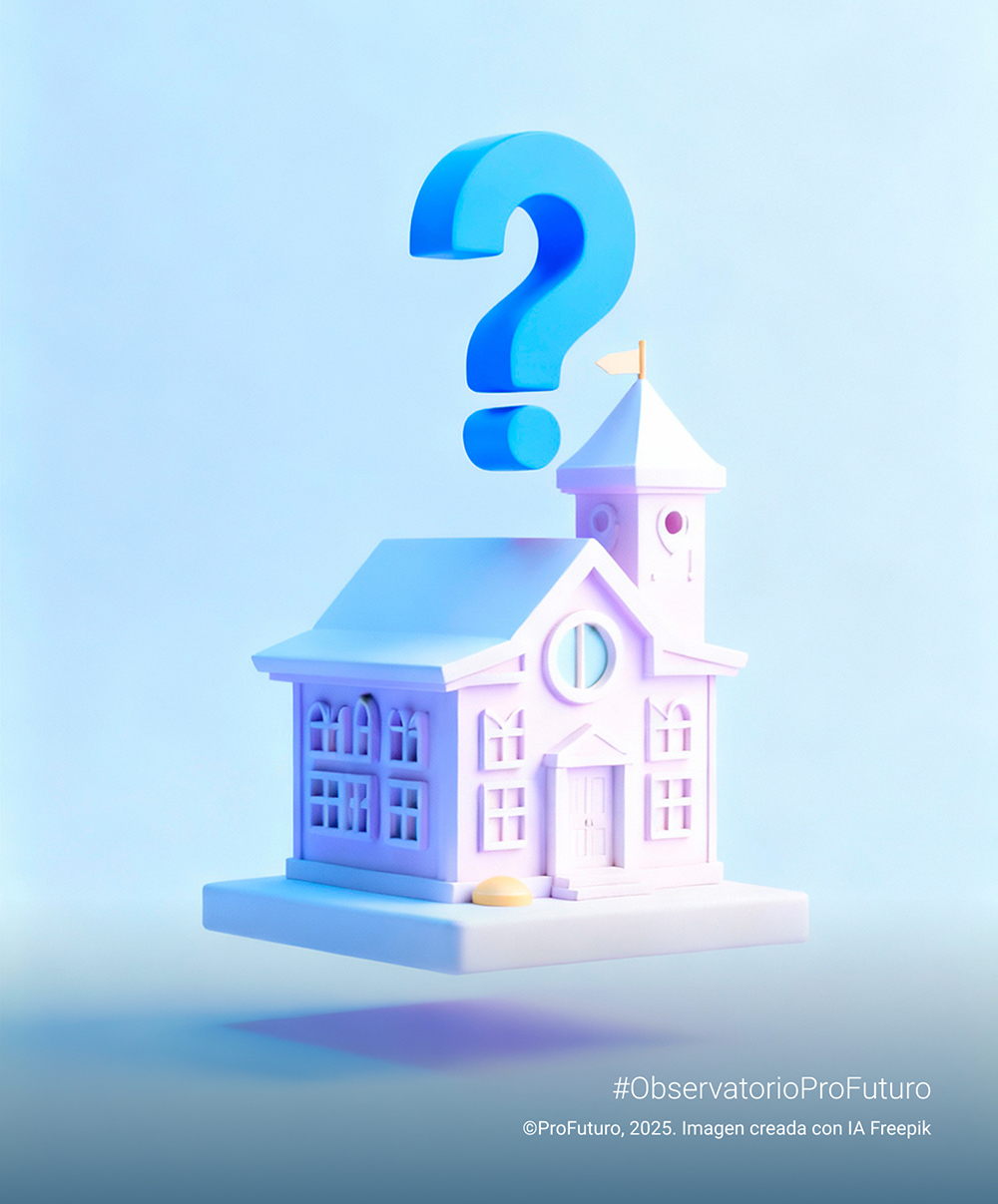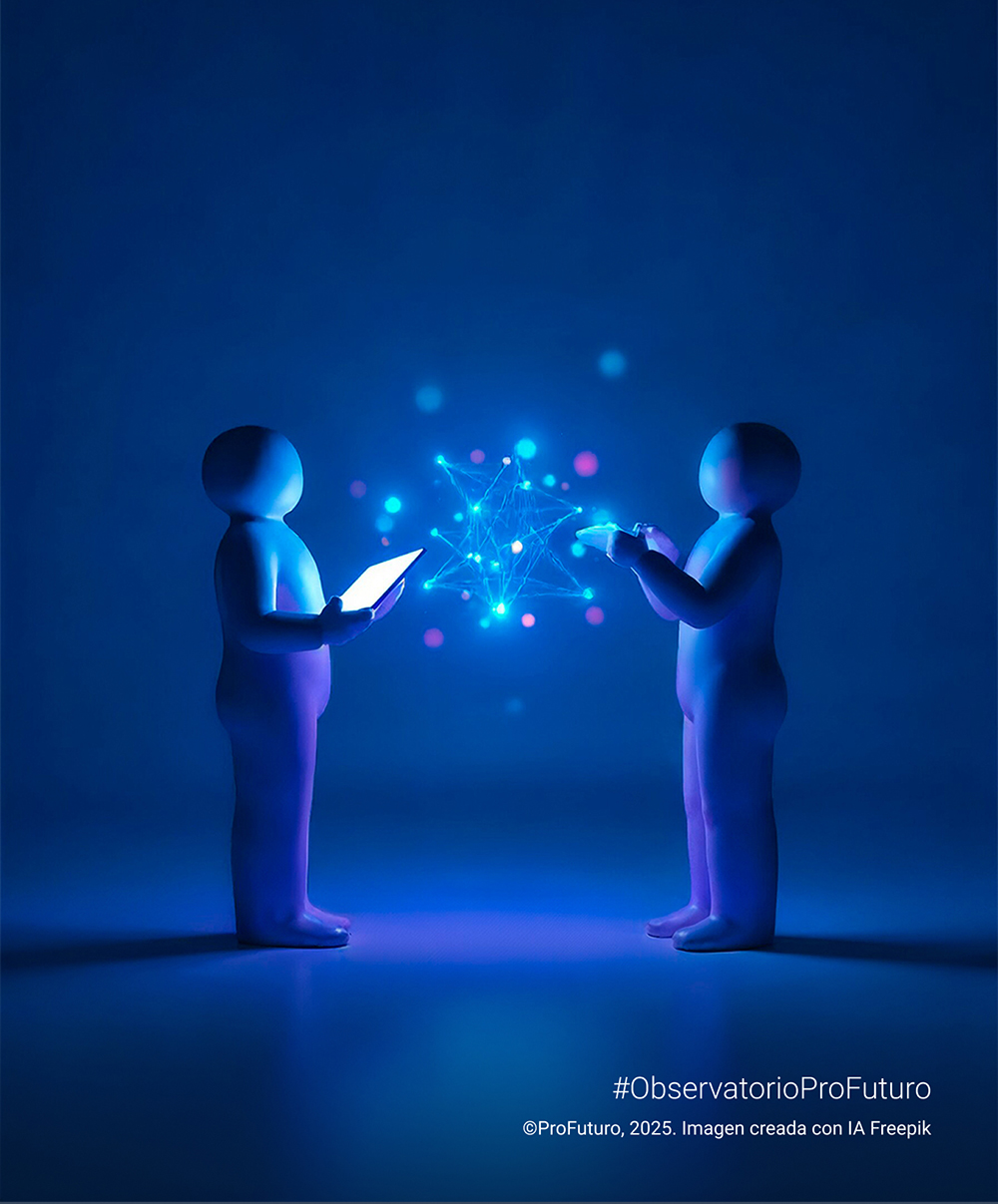Some grow up surrounded by books, while others have never held one in their hands. As digital stimuli multiply and knowledge seems to be just a click away, more than 763 million people still cannot read or write. Among them are 250 million children. And although literacy is advancing, reading comprehension remains a silent barrier: according to UNESCO, over 617 million minors do not reach basic reading levels. It’s not just about access to books; even when they are available, the connection with reading often fades. In adolescence, that bond is easily broken: in Spain, nearly half of young people admit to having drifted away from books between the ages of 12 and 18.
This situation is compounded by a phenomenon we live with daily: digital overstimulation. Young people spend more than eight hours a day in front of screens, often consuming content in a fragmented manner, without room for reflective reading or complex thought. Reading requires attention, depth, and connection with ideas, while digital media encourages speed, distraction, and forgetfulness.
But what if the digital world was not the enemy, but the ally? What if technological tools could help us not only teach reading, but also comprehension, reflection, and creation? This article starts from that premise: to explore how technology, when well-used and well-guided, can support children and adolescents on their reading journey. From access to books to the development of critical thinking, we offer a renewed perspective that sees digital tools as a bridge, not a wall. Because reading remains essential. And today, more than ever, it can also be digital.
First Step: Digital Literacy

In the 21st century, reading is no longer just about letters. In the digital age, understanding a text involves navigating virtual environments, filtering information, and connecting multiple sources. This is why digital literacy is now a basic condition for full access to reading and, ultimately, for the development of critical thinking.
The barriers, however, are still significant: 250 million children do not reach minimum literacy levels, and millions more grow up without access to adequate devices, stable connectivity, or teachers trained in digital skills. Overcoming these barriers requires more than goodwill: it demands clear, sustained, and context-aware strategies.
Keys to Effective Digital Literacy
- Context Analysis: Diagnosing the starting point is essential. Which technological tools and resources are accessible in this context? What level of digital proficiency do students have? What content is culturally and linguistically relevant?
- Curriculum Alignment: Technology must be integrated into pedagogical objectives, not used as an add-on. This means defining clear digital learning goals from an early age.
- Teacher Training: Teachers must have the tools, time, and support to adapt their classes. It’s not just about using platforms, but about creating reading experiences enriched by technology.
- Continuous Assessment: It is crucial to have systems in place to track progress, detect difficulties, and adjust strategies.
Three Models That Make a Difference
Some projects are already showing possible paths to bridging the gap. Worldreader, for example, has developed a digital library with nearly 6,000 titles in 52 languages. Its model adapts to contexts with low connectivity and basic devices, such as feature phones or e-readers. Since its launch in 2010, it has reached over 21 million people in more than 100 countries, especially in Africa, Asia, and Latin America. The key to its impact lies in a combination of localised content, teacher training, and usage monitoring.
In Asia, the Asia Foundation runs Let’s Read, a free platform that fills a gap left by the publishing market: publishing books in languages like Nepali, Khmer, or Bengali. Through community translation tools and collaborative editing, they have created a living library in over 50 Asian languages. Thanks to this effort, thousands of children can access illustrated stories in their mother tongue, strengthening both comprehension and emotional connection to reading.
In Spain, Odilo has been dubbed the “Netflix of education”. This platform uses artificial intelligence to tailor reading materials to each reader’s level, interests, and pace. Its catalogue exceeds three million titles, including books, audiobooks, magazines, and interactive content, in 40 languages. It also allows teachers and families to closely monitor reading progress, identify blocks, and provide personalised support. Its reading pathways, comprehension exercises, and gamification features aim to maintain motivation and reading habits.
According to the Royal Spanish Academy and Fundéu, the average young person’s everyday vocabulary barely exceeds 240 words, compared to the nearly 23,000 used by Cervantes in Don Quixote.
Understanding What We Read
Every day we read hundreds, sometimes thousands, of words: headlines, emails, messages, tweets, notifications… But how many of those texts invite us to think, to question, to form our own opinion? Reading comprehension — the ability to interpret, analyse, and reflect on a text — is not an automatic skill. It is a skill that must be trained, requires effort, and today is threatened by the dizzying pace of digital life. We’ve become used to fragments, headlines, immediacy. But deep, serious reading requires time and willingness — a rarity these days.
Faced with this challenge, technology should not be seen as an enemy, but as an ally. What matters is not how much it is used, but how. In classrooms, some teachers are already reimagining reading using tools that young people themselves use daily.
Spotify, for instance, has become an unexpected educational resource. Teachers ask students to create playlists inspired by literary works, using music to interpret emotions, characters, and plots. The result is a more sensory, relatable, and critical reading experience.
Other initiatives, like book trailers, are also gaining traction. Students summarise a book in audiovisual format: selecting key scenes, portraying characters, making judgements. In doing so, they not only demonstrate comprehension but become active creators of meaning.
Even platforms like Canva, typically used for graphic design, include exercises specifically designed to help students formulate critical questions about texts. These go beyond “what happened” to focus on “why” and “what if…”, thereby strengthening the interpretative and questioning skills that lie at the heart of reading comprehension.
Deep reading, then, remains possible — but it requires new strategies. The key is not to go back to the past, but to make the most of the present. Reading — with the eyes, the mind, and the heart — remains a powerful tool. We just need to find new ways to use it.
Technology to Reconnect with the Pleasure of Reading
Something happens to reading when we enter adolescence. According to the 2023 Barometer of Reading and Book Buying Habits in Spain, between the ages of 14 and 18, the habit of reading drops drastically: nearly half of young people admit to having lost interest in reading during this key stage.
The reasons for this decline are varied, but one stands out across multiple studies: for many teenagers, school does not encourage reading — it discourages it. Forced to read books they find alien and disconnected from their interests, young people begin to associate reading with boredom and obligation, not pleasure or discovery.
But not all is lost. The same digital culture that competes for their attention can be the gateway to a new relationship with reading. TikTok, YouTube, and Instagram — native platforms of this generation — are becoming unexpected vehicles for rekindling the lost connection with books.
Booktubers and Booktokers, for example, have achieved what many textbooks could not: talking about literature in a relatable, emotional, and passionate way. These content creators recommend books, share reviews, and open discussions with thousands of young people who discover that reading can also be a social and entertaining experience.
Online book clubs work in the same vein: they create communities where young people choose what to read and discuss freely, without the pressure of grades or exams. There, reading becomes a conversation, a shared identity, a critical playground.
Technology also provides a space for teenagers to stop being just readers and become creators. Self-publishing and collaborative writing platforms allow them to write their own stories, read those of other young people, and build literary networks. Add to that virtual encounters with authors, where the distance between text and writer is reduced to a video call, and literature gains a face, a voice, and emotion.
Digital media, when properly focused, can be much more than a distraction: it can be a bridge. A bridge back to reading not out of obligation, but out of desire. To remember — or discover — that words can also ignite, move, and transform.
Reading to Think
Reading is not just an academic skill or a form of entertainment. It is, above all, a social and political act. Those who read deeply do not merely access information: they learn to think, to question, to put themselves in someone else’s shoes. Reading activates critical thinking, expands language, and develops empathy — essential skills for participating in a plural and complex society.
A reader-citizen is less likely to accept imposed truths or simplistic solutions. Someone who questions, who compares, who seeks to understand before voicing an opinion. That’s why reading well — reading seriously — is one of the foundations of a healthy democracy.
But when reading habits shrink or become superficial, the consequences soon appear. The impoverishment of language is a visible symptom. According to the Royal Spanish Academy and Fundéu, the average young person’s everyday vocabulary barely exceeds 240 words, compared to the nearly 23,000 used by Cervantes in Don Quixote. And it’s not about linguistic nostalgia: without sufficient words, thinking narrows. One cannot reflect on what one cannot name.
The impact of this lexical and cognitive poverty goes beyond the classroom. Societies with low reading comprehension levels are more vulnerable to misinformation, hate speech, and populism. Without the ability to analyse and contrast sources, citizens are more easily manipulated and public debate becomes polarised.
Here again, technology can play the role of a potential ally. When used with pedagogical intent, digital platforms can help cultivate readers capable of analysing and contrasting sources, identifying fake news, and constructing well-founded arguments. For instance, apps that encourage young people to write and publish their own stories or articles push them to think carefully about their language, how they express themselves, and how they justify their ideas. Additionally, interactive webinars with experts and authors allow students to challenge their own views against authoritative voices, generating meaningful learning and deepening critical thinking.
Likewise, digital libraries and AI-based recommendation tools can bring students closer to readings that challenge their thinking, push them out of their comfort zones, and broaden their cultural and social horizons. The key lies not only in the quantity, but in the quality of what is read and how it is approached.
Ultimately, it is not just about reading more, but reading better. And doing so with the aim of shaping citizens capable of thinking rigorously, feeling with empathy, and acting responsibly in public life.
Reading More and Reading Better
Technology offers a unique bridge to rebuild reading habits in a generation raised in the digital world. But that bridge will only be effective if we avoid falling into superficial or merely instrumental use of digital tools.
We need a pedagogical approach that promotes deep, slow, and reflective reading. It’s not just about forming people who read more, but individuals who read better — with more empathy and greater critical capacity.
Because technology is not the goal, but a tool. Let’s use it with purpose and creativity to help us build engaged reading communities, capable of sustaining critical thinking and social transformation in the heart of the digital age.






